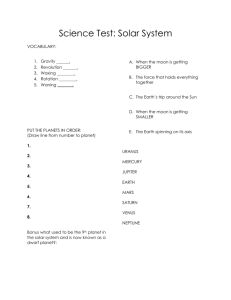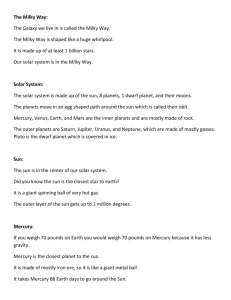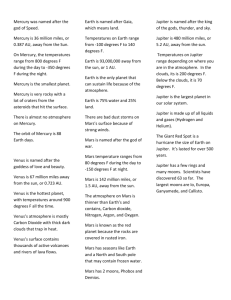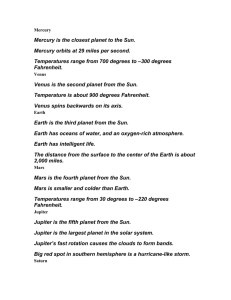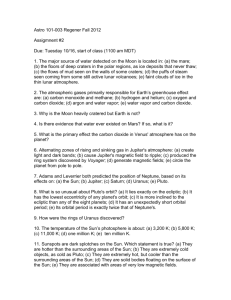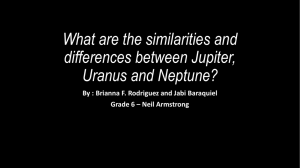The sun gets hotter as it gets closer to its centre Some facts about
advertisement
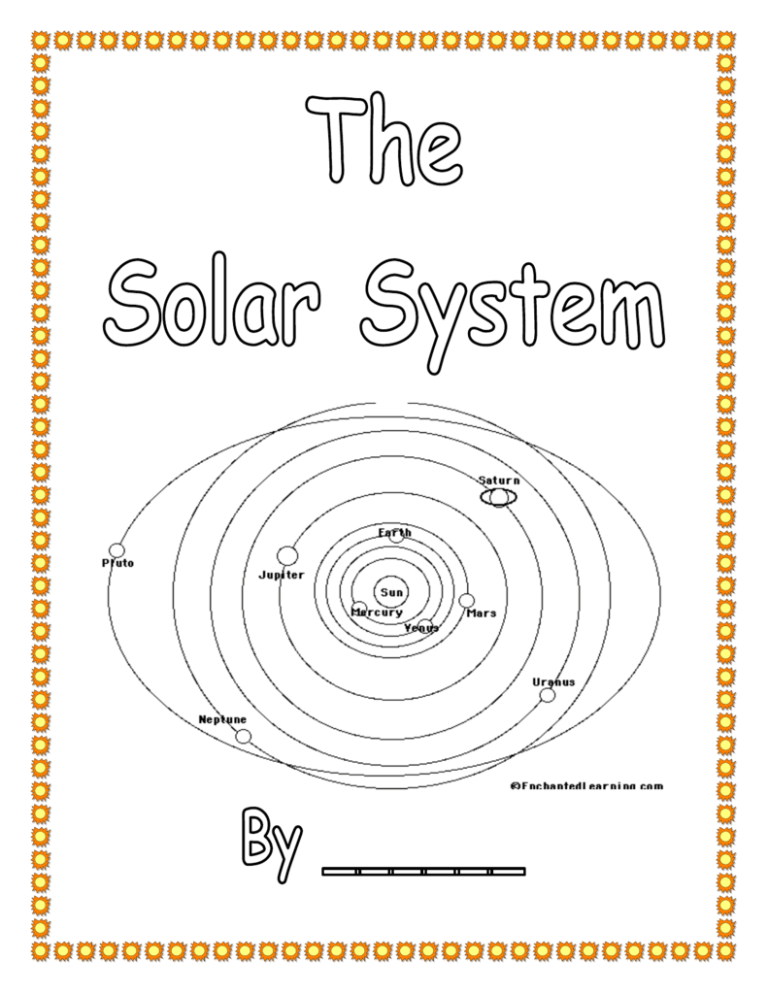
Mercury Venus Earth Mars Jupitor Saturn Uranus Neptune Pluto 87.97 days 224.70 days 365.26 days 686.98 days 11.86 years 29.50 years 84.01 years 164.79 years 248.54 years _____________________________________________________________________________________ ___________________________________________________________________ ___________________________________________________________________ Mercury Venus Earth Mars Jupitor Saturn Uranus Neptune Pluto 87.97 days 224.70 days 365.26 days 686.98 days 11.86 years 29.50 years 84.01 years 164.79 years 248.54 years The sun gets hotter as it gets closer to its centre Helios 2 Some facts about Mercury DAY NIGHT Some facts about Venus Some facts about Earth َو ُه َو الَّ ِذي َخلَقَ ِم َن اء ْال َم ِ Qur’an 25:54 اء ُك َّل َو َجعَ ْلنَا ِم َن ْال َم ِ َ ش ْي ٍء َحي ٍ Qur’an 21:30 َو َّ اَّللُ َخلَقَ ُك َّل دَابَّ ٍة ِمن اء َّم ٍ Qur’an 24:45 Some facts about Mars Some facts about Jupiter ___________________________________________________________________ ___________________________________________________________________ ___________________________________________________________________ ___________________________________________________________________ ___________________________________________________________________ ___________________________________________________________________ ___________________________________________________________________ ___________________________________________________________________ Some facts about Saturn Some facts about Uranus Some facts about Neptune Some facts about Pluto PLANET FACTS Mercury Fact 1: Mercury is the closest planet to the sun and the fastest moving planet in the Solar system. Fact 2: Mercury is a hot and rocky planet. During the day time it is hotter than an oven, during the night time it is colder than a freezer. Fact 3: There are lots of craters on Mercury. Its surface looks similar to the surface of our moon. Fact 4: Mercury has no moons. Venus Fact 1: Venus is the second planet from the sun. It is the hottest planet in the Solar system. Fact 2: Venus is covered with fast-moving sulphuric acid clouds that trap heat from the sun. Fact 3: Venus turns slowly. Each day on Venus takes 243 Earth days. Fact 4: Venus has no moons. Earth Fact 1: Earth is the third planet from the sun. It is the planet we live on and the only planet in the Solar system that is known to support life. Fact 2: Earth is the 5th largest planet in the Solar system. Fact 3: The earth is made up of 75% (three quarters) water. This is the main reason why Earth can support life (See Qur’an). Fact 4: Earth has one moon. Mars Fact 1: Mars is the fourth planet from the sun. Mars is red because it is covered with rust (iron oxide). Rust forms when iron mixes with small amounts of oxygen and water. Fact 2: Mars is a dry rocky planet with ice caps at its north and south poles like Earth. Fact 3: The largest volcano in the solar system is on Mars. It is called Mount Olympus. It is 17 miles tall and 320 miles wide. Fact 4: Mars has 2 tiny moons called Phobos and Deimus. Jupiter Fact 1: Jupiter is the fifth and largest planet. It is mostly made of gas and some liquids. There are no seasons on the planet Jupiter. Fact 2: There is a large red spot on Jupiter. This is a raging storm. The Earth is the same size as Jupiter’s red spot. Fact 3: Jupiter is so big that all the other planets could fit inside it. Fact 4: Jupiter has 39 moons so far. Saturn Fact 1: Saturn is the 6th planet from the Sun. It is the 2nd largest planet in our solar system. It has rings made of ice and dust particles Fact 2: We can see Saturn with a telescope but we need a small telescope to see its rings. Fact 3: Saturn looks like it has stripes because it is made of different gases. Some of the gases do not mix and when Saturn spins, high winds blow the gases into stripes. Fact 4: Saturn has 33 moons so far. Titan is the largest moon. Uranus Fact 1: Uranus is the seventh planet from the sun. It is a large, icy planet covered in clouds. Uranus is blue because of the methane gas in its atmosphere. Fact 2: Uranus is the third largest planet in the Solar System. Uranus has extreme seasons with extremely dark and cold years followed by extremely hot years. Fact 3: Uranus has a thin belt of 11 rings made up of rock and dust. Fact 4: Uranus has 22 known moons. Oberon is the largest moon. Neptune Fact 1: Neptune is the 8th planet from the Sun. It is the 4th largest planet in our solar system. Neptune is covered in clouds and is blue because of Methane gas in its atmosphere. Fact 2: Neptune also has a storm much like Jupitor. Neptune’s storm is called its Great Dark Spot Fact 3: Neptune also has rings. These rings are made up of dark rock and dust. One of the rings even has a twist in it. Fact 4: moon. Neptune has 13 moons so far. Triton is the largest Pluto Fact 1: Pluto is not really a planet. It is called a dwarf planet. There are many dwarf planets in our Solar System. Pluto is smaller than many of the moons in the Solar System, including our own moon. Fact 2: Pluto is an extremely cold planet because it is so far away from the sun. From Pluto the sun would look like a tiny dot in the sky. Fact 3: Nobody really knows what Pluto is made of although scientists think it is probably 70% rock and 30% water. Fact 4: Pluto has one large moon and two tiny moons.

